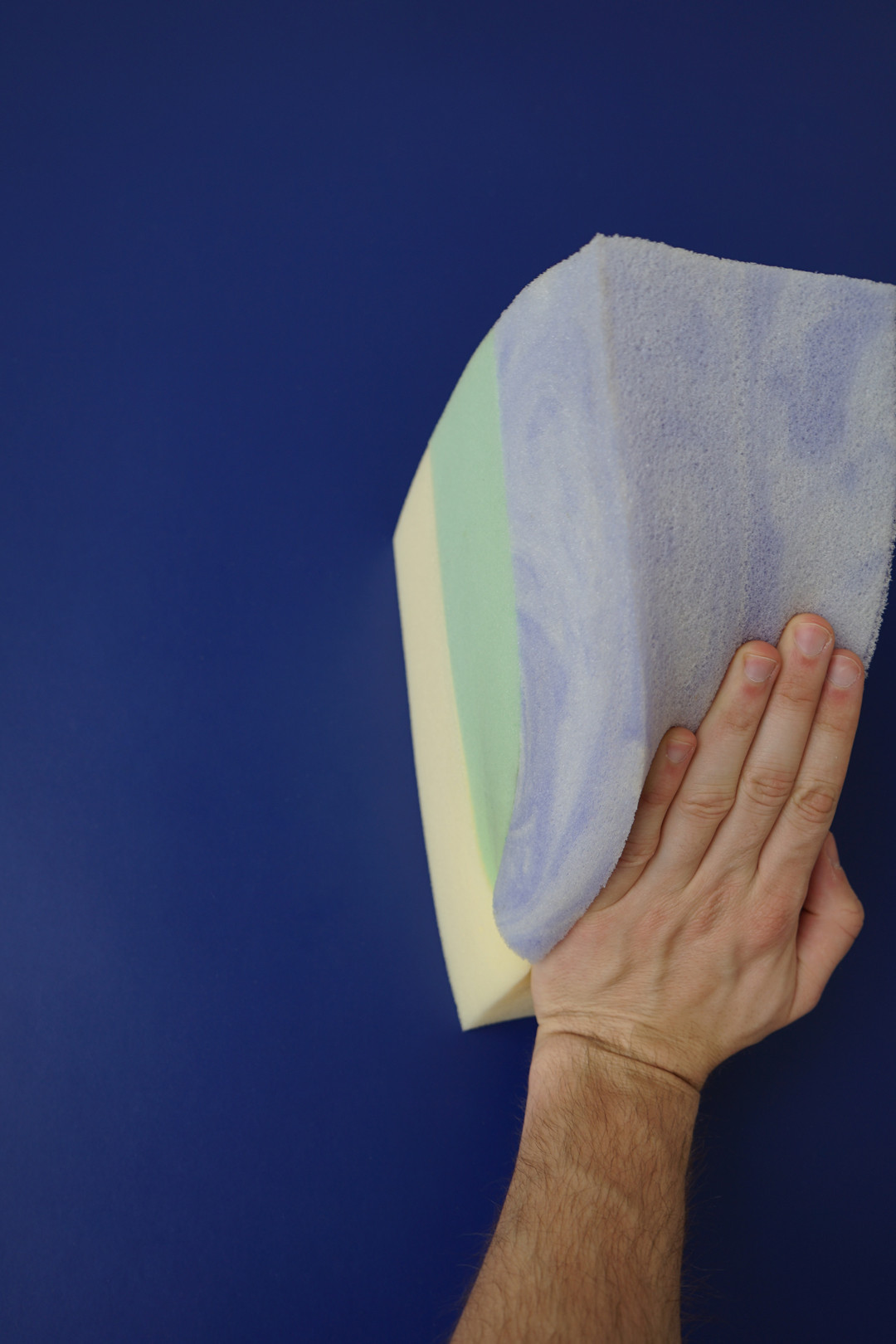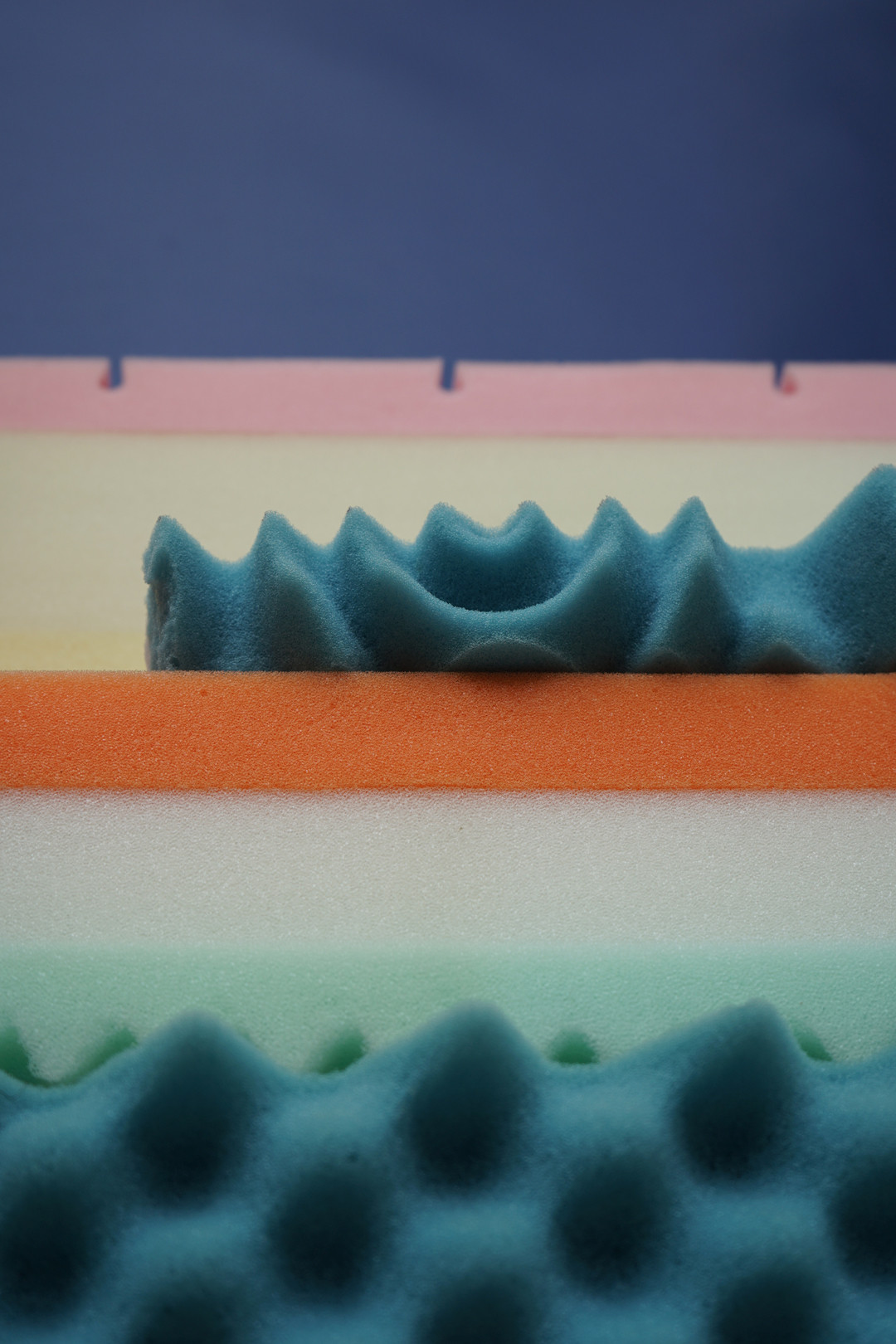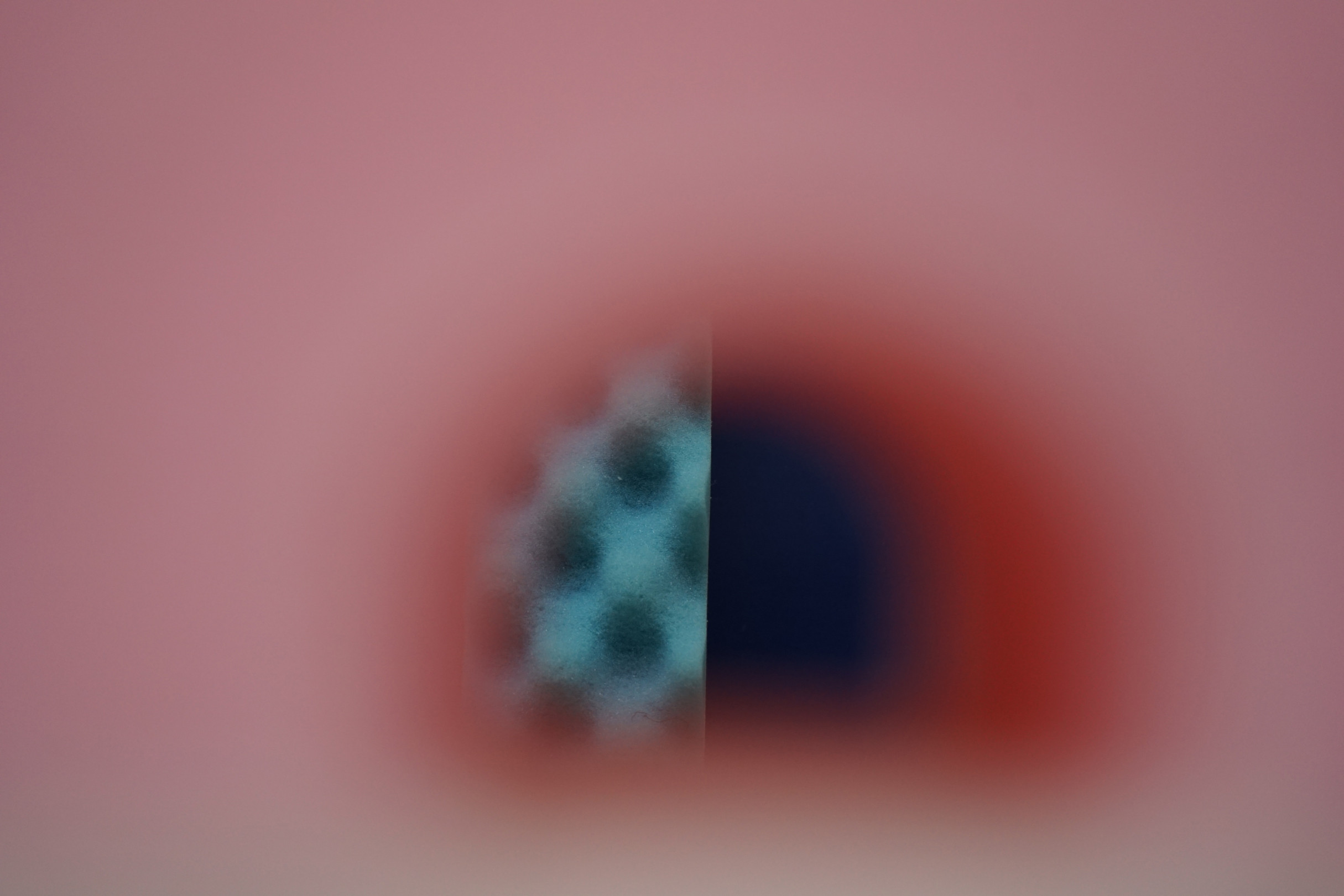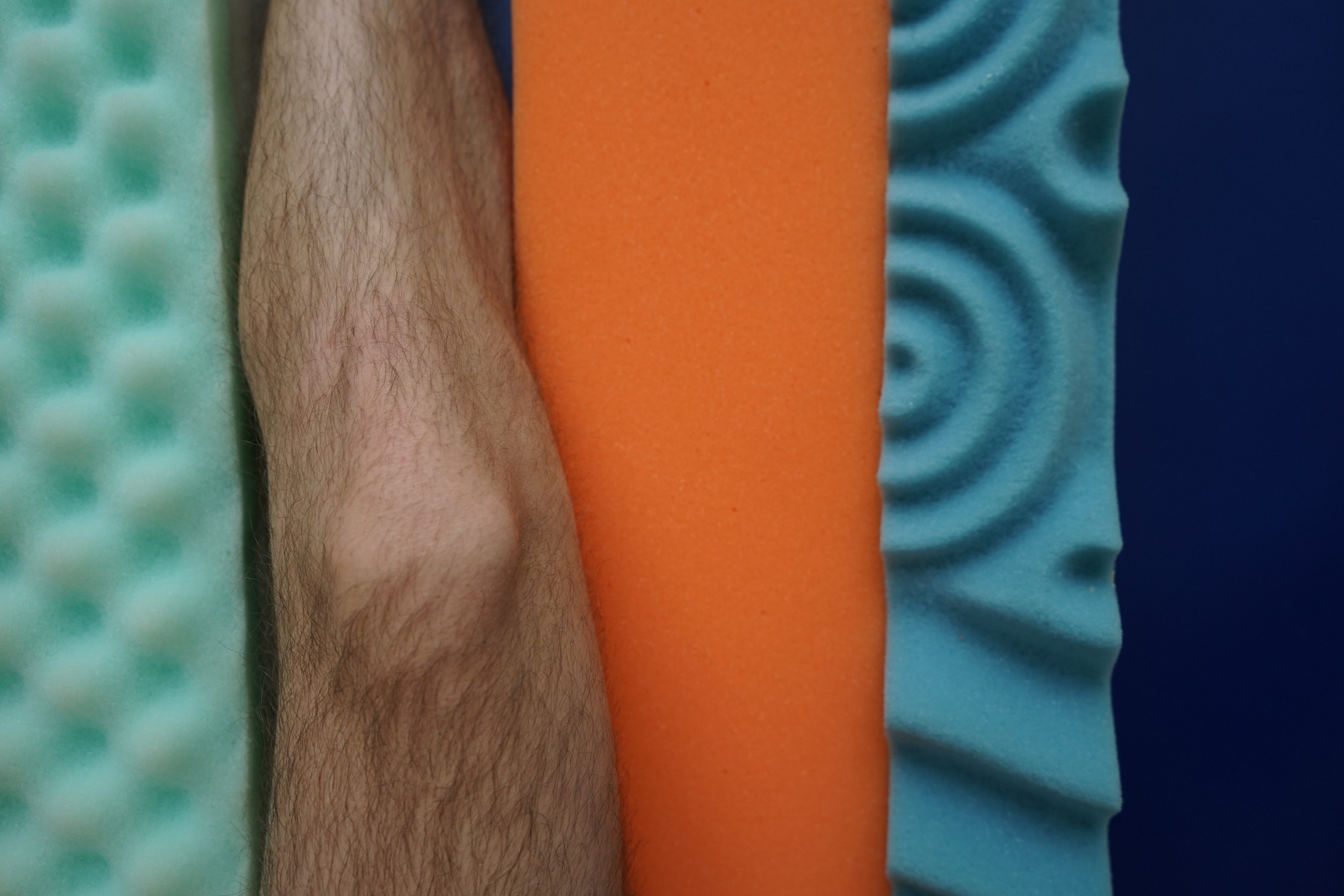Štěpán Rubáš↓
Gallery
Studies
| 2019–2022 | Intermedia 1, AVU (Milena Dopitová) |
| 2016–2019 | Painting 2, AVU (Vladimír Skrepl) |
| 2016–2017 | Ateliér hostujícího umělce v Šalounově vile (John Hill) |
About the work
The First Position
The Academy of Fine Arts will soon present a new open space. It will be a place to experience something new and extraordinary that will encourage further research. Its forms will be familiar and will invite interaction.
We jointly build on our earlier works, which mainly reflected the joy of movement and the subject of relations. We initially cooperated as a duo and explored the nonverbal dialogue of bodies. We drew from our shared dance experience of couples’ competitive ballroom dancing, when a duet can be a game, a seduction, a schematic model, or even a duel. It was about a demonstration of two bodies that respect each other, but at the same time must not fear total surrendering oneself to the other, and agree on adapting to each other’s bodily constitution. Such an experience not only requires courage, close familiarity with the partner’s weight and the skill of handling it, but also mental harmony. Our recent project, The Variable Orange, extended our duo with more actors, people close to us, and the result had the form of a group event. We became interested in the communication of a larger group of bodies and their confrontation with rules and themselves, when the yet unexplored position of choreographers opened up to us.
We often subconsciously desire improvisation and run a certain risk. We gradually reveal the space of movement to wide public through the discourse of staging and perception – i.e., through choreography as a staged arrangement of bodies in the texture of space and time – that evolve into a reflective process. The self-reflection in a work can serve as therapy thanks to a collective experience. By playing, we ignite curiosity and interest (whether it concerns viewers, or the actors) and the associated enrichment of everyday reality.
The specific space is a combination of an artistic environment an experimental movement. There appears a zone open to movement. The movement that is not but may as well be perfect. Its multilayered character allows one to solely be a passive observer and decipher visual codes and metaphors, or get carried away by color on a large scale. Through touch and attentive perception, we offer viewers to acquire knowledge via other senses than the rational reflection.
The transformation of the classical ballet barre results in The Flow as the central choreographic object. It is a training ground, an arena, but also a spatial drawing. Both the dancer and the spectator thus find themselves in a new situation. They are in particularly uncomfortable positions. The circular format forestalls concentrated focus on one’s energy and directly encourages collective dialogue. The theatrical term “black university” (better known as “black box”) refers to a space (usually a stage) eager for action. It demands performativity, light, and dialogue with viewers. We shift from fascination with the stage as a place that is still waiting - it needs to be filled with movement – to objects that seemingly resemble a function. These are the two main directions in which we approach the entire space of the experimental project.
The dark blue, reflected throughout the space, symbolically refers to the historical birth of Action Art. Blue symbolizes intuition, concentration, and the absolute. This part of the surface thus becomes a setting reserved for training or a workplace where we all can meet.



